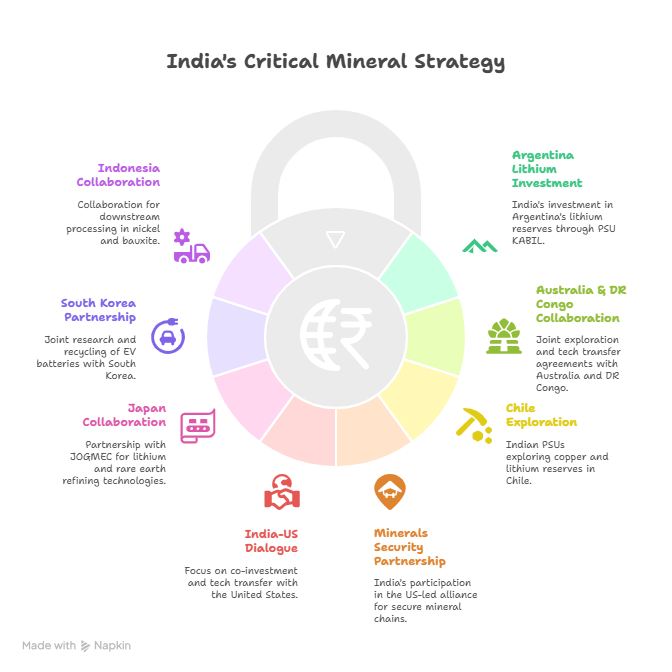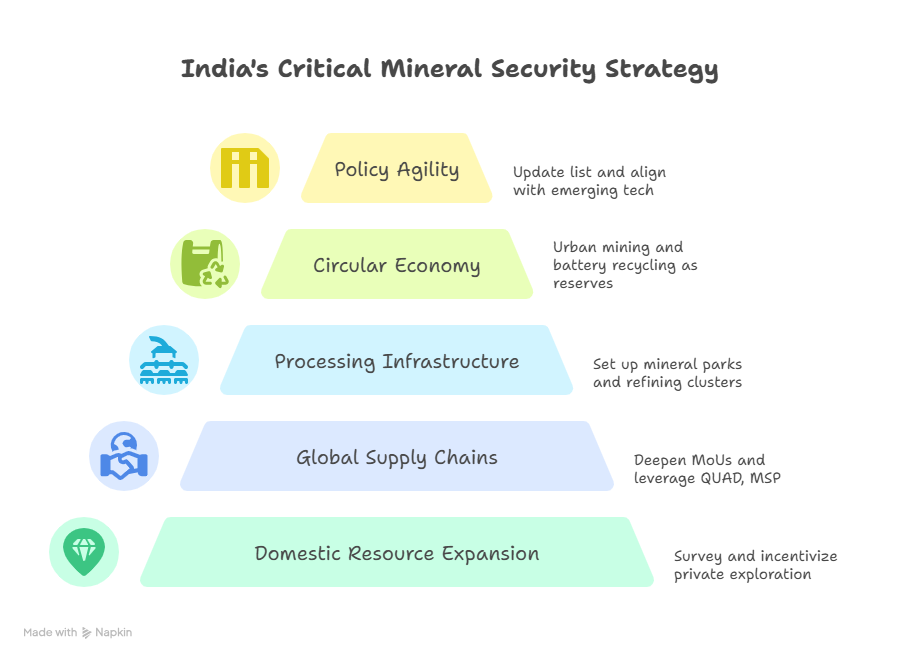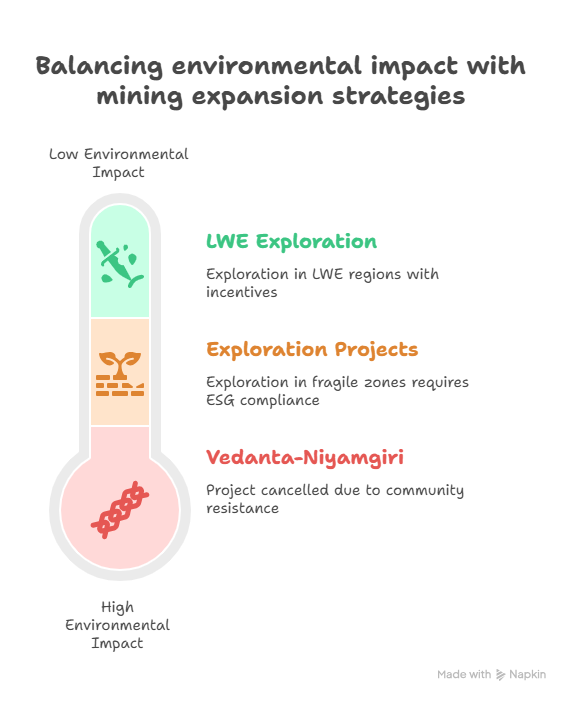Font size:
Print
India’s Critical Mineral Strategy: A Bold Leap for Clean Energy Leadership
India’s Critical Mineral Strategy: A Visionary Push for Global Clean Tech Dominance
Context: Critical minerals have become central to 21st-century geoeconomics, underpinning clean energy, advanced manufacturing, digitalisation, and national security.

What are critical minerals and why are they essential for India’s future?
- Critical minerals are natural elements that are essential for high-tech, clean energy, and defence applications but have a high risk of supply disruption. These include lithium, cobalt, nickel, rare earth elements (REEs), graphite, and copper.
-
Strategic Relevance for India:
-
- Clean Energy Transition: Core to India’s Net-Zero 2070 target, green hydrogen plans, and National Electric Mobility Mission.
- Industrial Competitiveness: Required for semiconductors, drones, solar PVs, and advanced electronics.
- Supply Dependence: India is 100% import-dependent for lithium, cobalt, and nickel.
According to the IEA Critical Minerals Market Review 2024, demand for lithium, cobalt, and graphite will grow more than 3.5x by 2040 under net-zero targets.
Why is there a global race for critical minerals and how does it impact India?
- China’s Dominance: Controls 70%+ of lithium refining, 60% of cobalt processing, and 90% of rare earth refining. Imposed export restrictions (2023–24) on gallium, germanium, terbium, and samarium—used in chips, defence tech, and EVs.
- US-China Trade Tensions: U.S. tariffs on Chinese lithium-ion batteries are set to increase from 7.5% to 25% by Jan 2026. Europe’s €12 billion Global Gateway Plan is redirecting supply chains toward Central Asia and Africa.
- Implication for India: India risks becoming geopolitically exposed and economically vulnerable unless it builds resilient, diversified supply chains and domestic refining capacity.

How is India addressing its midstream processing and value chain gaps?
-
Identified Challenges:
-
-
- No battery-grade processing of lithium, cobalt, or rare earths.
- Limited private sector interest due to high capital costs and uncertain ROI.
-
-
Policy Interventions:
-
- NCMM proposes mineral processing clusters and shared infrastructure.
- Budget 2025-26 hints at extending PLI-style incentives to mineral refining.
- National Critical Minerals Mission (NCMM): Launched in FY 2024–25 with a ₹16,300 crore budget; another ₹18,000 crore PSU investment planned.
- MMDR Act Amendments (2023–25): Enabled auction of critical mineral blocks; 5 auction tranches held; custom duty exemptions extended to 25+ minerals in Budget 2025–26.
Example: Despite domestic lithium discoveries (e.g., in J&K, 2023), India cannot convert ore to battery-grade lithium without midstream plants, delaying commercial use.

What is India doing to promote recycling and circular economy in critical minerals?
- Recycling Landscape:India’s e-waste and battery recycling sector is largely informal and inefficient.
- Reform Agenda:
-
- Formal recycling hubs for electronics and lithium-ion batteries.
- Minimum recovery standards modeled on the EU’s Battery Directive (e.g., 50% lithium, 95% cobalt by 2030).
- Tax breaks and incentives for urban mining from scrap and obsolete electronics.
- Policy Reference: Budget 2025–26 proposed recovery from mine tailings and EV battery packs under NCMM.
